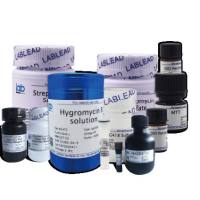Metabolomics-Edited Transcriptomics Analysis (META)
互联网
843
The study of the metabolome or systems biochemical functions in response to external agents such as drugs or toxicants is made possible by recent advances in NMR and mass spectrometry. By coupling the analytical technologies with the stable isotope tracer approach, it is also practical to map changes in metabolic networks with atomic resolution such that metabolic perturbations can be discerned at the enzyme reaction level. This information readily lends its use in guiding transcriptomic analysis for metabolic regulations at the transcriptional level—an approach called “M etabolomics-E dited T ranscriptomic A nalysis” or META. Two example studies are given to illustrate the use of uniformly 13 C-labeled glucose tracer, 13 C-isotopomer-based metabolomic analysis, and META for reconstructing metabolic pathways and for discerning their regulatory pathways. The first example describes a hypothetical investigation on the role of a “master” metabolic switch (AMP-activated protein kinase or AMPK) in regulating nucleic acid, lipid, and protein-related metabolism. NMR and GC-MS are complementarily used to obtain quantitative changes in metabolite and 13 C-isotopomer profiles in a model cancer cell in response to AMPK activation (induced by AICAR, an adenosine analogue) or AMPK inactivation via siRNA knockdown. Expected findings from META that are consistent with known AMPK-mediated regulations include downregulation or phosphorylation of key proteins involved in the synthesis of fatty acids, phospholipids, and proteins. Scenarios for uncovering metabolic regulations previously unknown or contradictory to known AMPK actions are also given. The second example illustrates a real-world investigation on defining the multitargeted action of selenite in human lung adenocarcinoma A549 cells. The META approach revealed AMPK-mediated downregulation of fatty acid and protein synthesis, in addition to negative regulation of glycolysis, pentose phosphate pathway, Krebs cycle, glutathione synthesis, and nucleotide synthesis, as well as positive regulation of Gln metabolism. The complexity of the selenite action including the induction of opposing regulatory events was resolvable with the integrated metabolomics and transcriptomics approach, which is also generally applicable to any living system including the human body.








